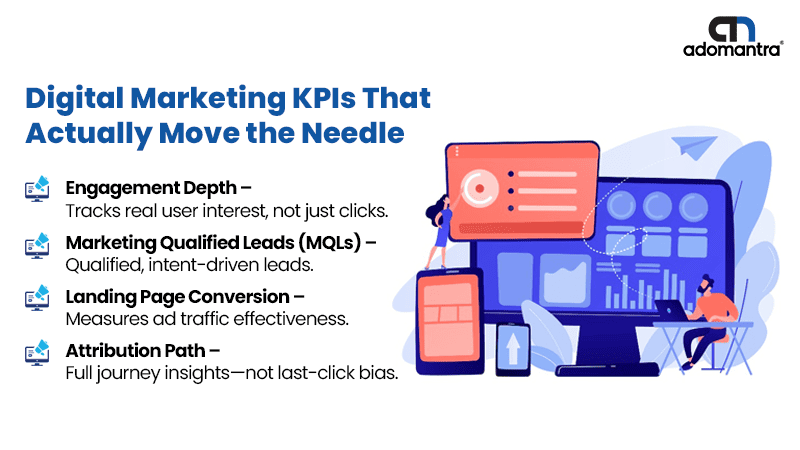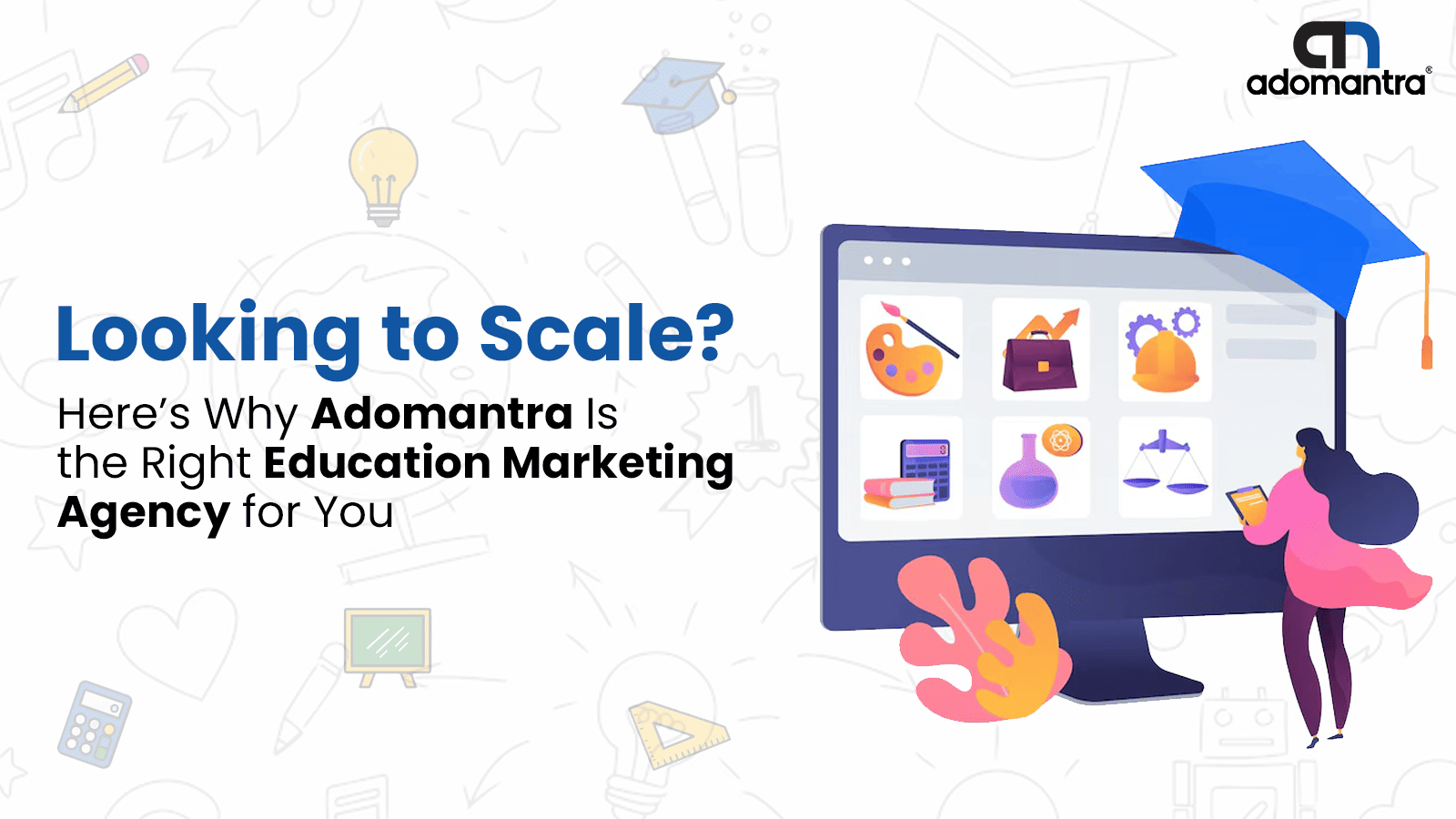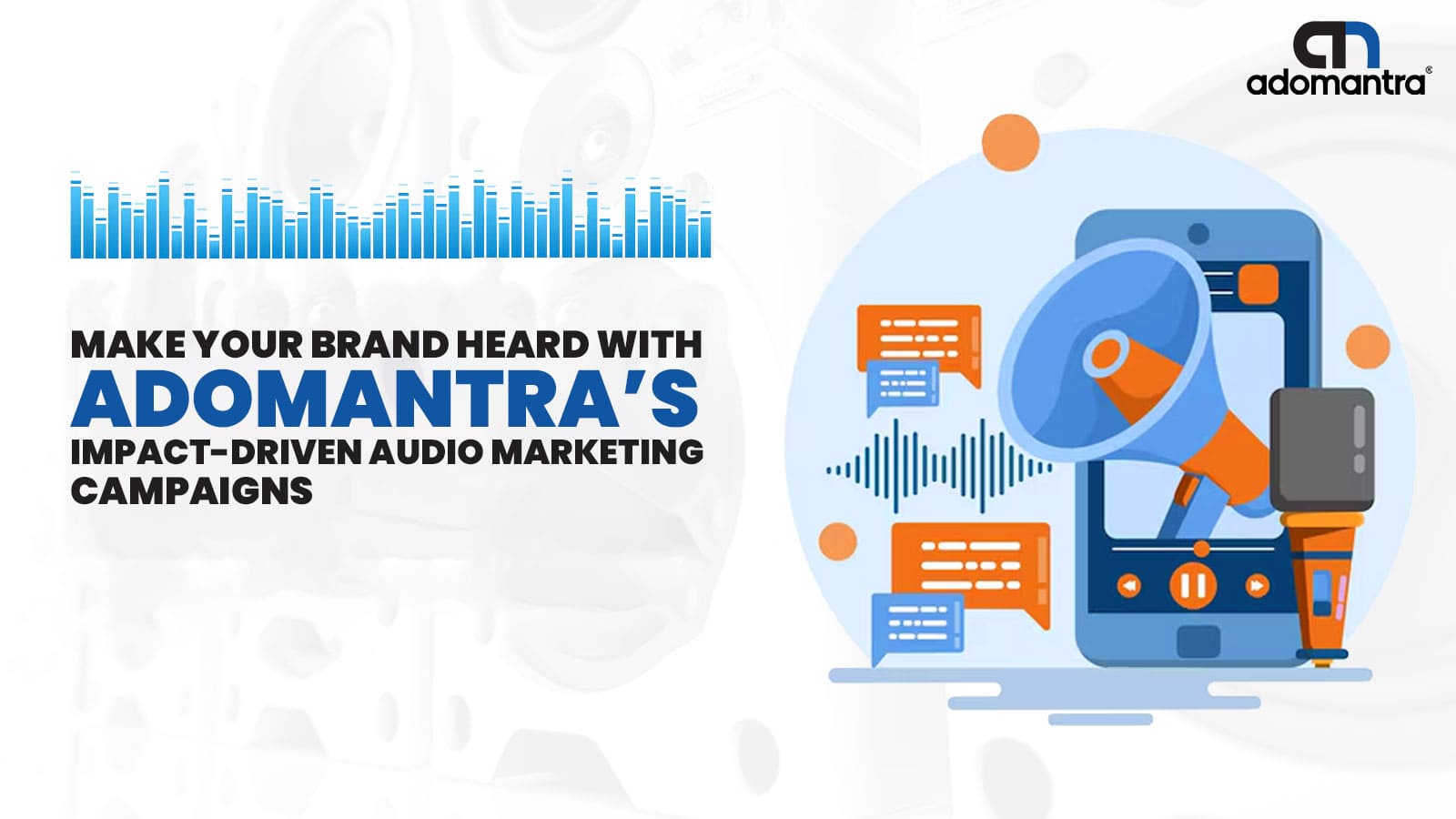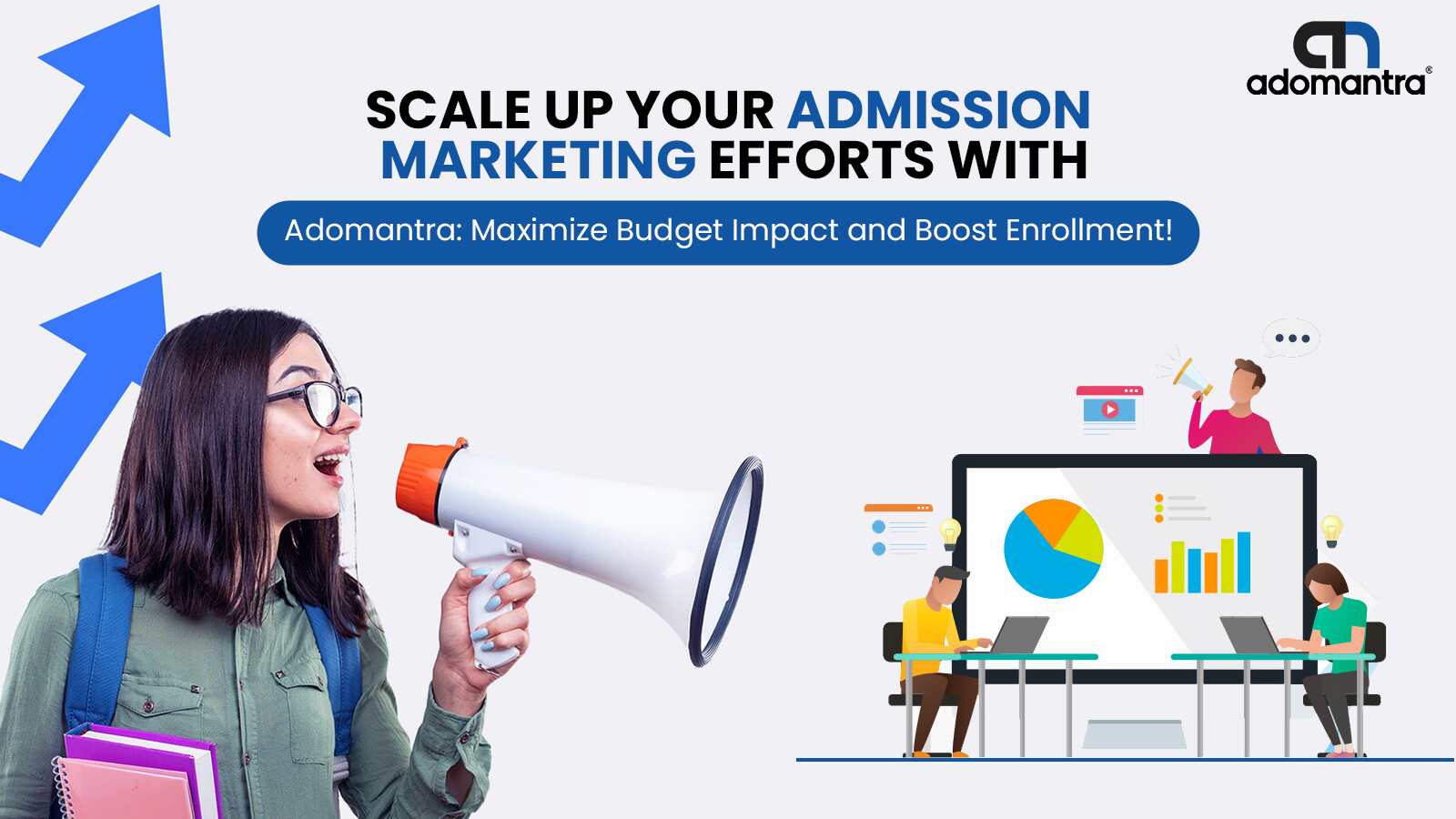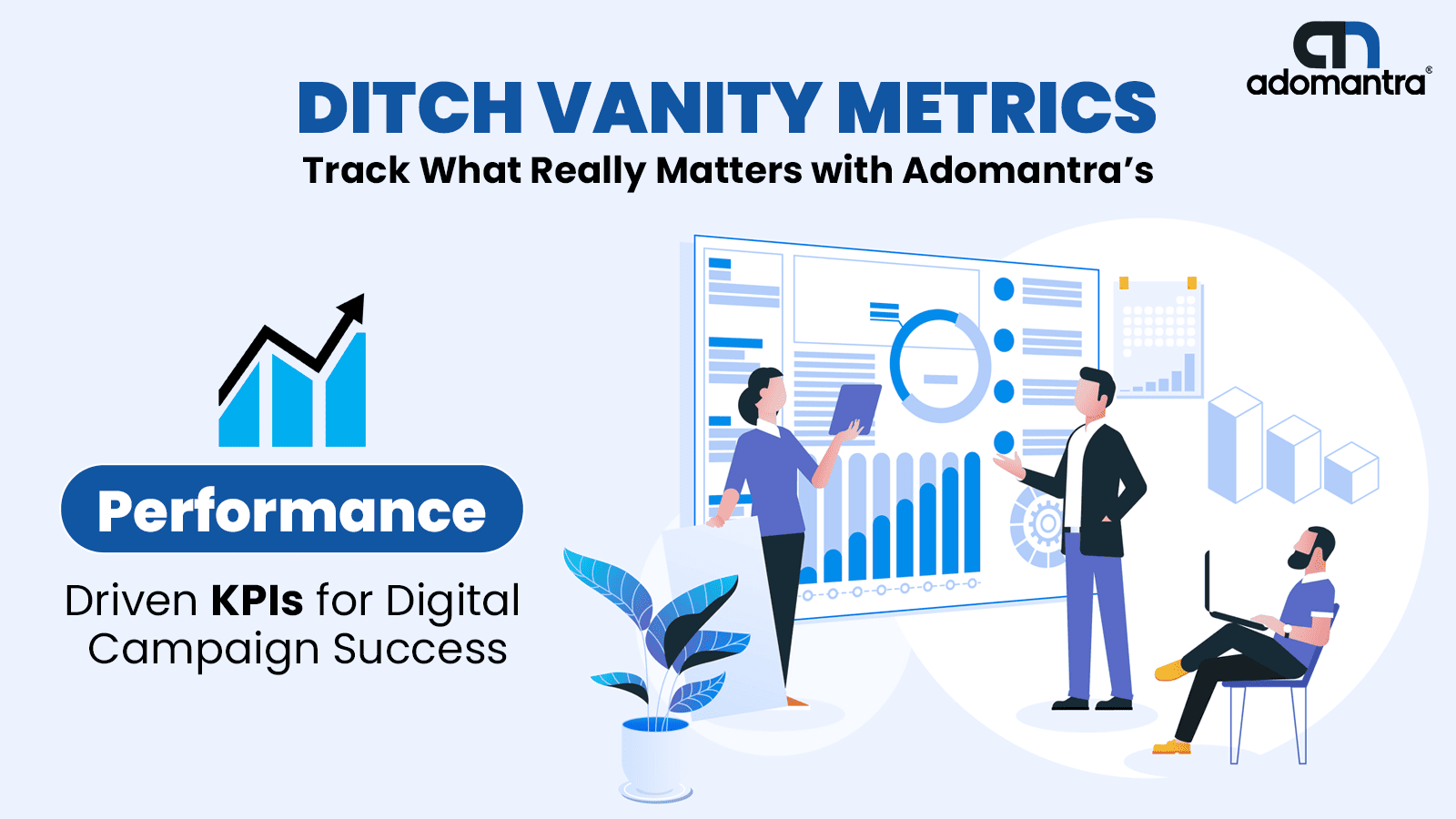
Forget Vanity Metrics: Check Out the Real KPIs To Track The Success of Your Digital Campaign
Digital marketing is full of noise. Impressions. Likes. Followers. Marketers love to flaunt them—but let’s be honest, they don’t always tell the real story.
Vanity metrics feel good but don’t grow your bottom line.
If you need help cutting through the noise and focusing on what actually moves the needle? We are here to help. We partner with leading brands in healthcare, education, retail, real estate, and tech to deliver high-impact campaigns that perform. We focus on real marketing KPIs, measurable outcomes, and strategies that align directly with your business goals—no fluff, just results.
Because at the end of the day, you’re not running a campaign to collect likes—you’re running it to drive revenue. Keep reading to get more insights!
The KPI Shift: Why B2B Marketers Are Rethinking Success
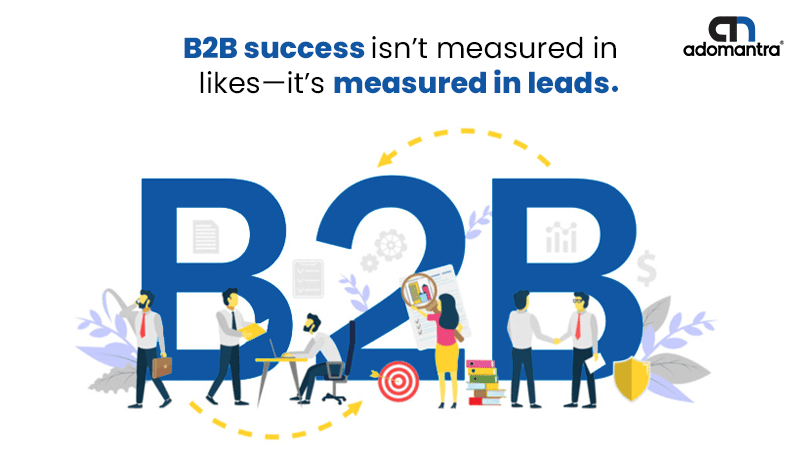
In today’s performance-first world, B2B decision-makers don’t want flashy dashboards—they want ROI.
In fact, according to HubSpot’s 2024 Marketing Trends Report, around 70% of B2B marketers say that tying campaigns to business outcomes is now their biggest priority. Another 67% say they plan to invest more in marketing analytics this year to track what's truly working.
The problem? Many brands are still using outdated indicators. Likes, page views, reach, and shares may show visibility, but they don’t measure intent, conversion, or profitability. That’s why switching to meaningful digital marketing KPIs is crucial for sustained growth.
The Real Deal: 9 Digital Campaign KPIs That Actually Matter
If you're still tracking vanity metrics like "likes" and "reach" as your north star, it's time to switch to KPIs that actually move the revenue needle. At Adomantra, these are the key performance indicators for digital marketing that we trust—and our clients see the difference.
1. Cost Per Acquisition (CPA)
This tells you how much you're spending to bring in a paying customer. A high CPA means inefficiencies in your funnel or targeting.
How we use it: We constantly optimize creatives, placements, and audience segments to lower CPA without sacrificing lead quality. For one client, we reduced their CPA by 47% within 60 days through A/B creative testing and behavioral segmentation.
2. Customer Lifetime Value (CLV)
CLV calculates how much value a single customer will bring to your brand over time. It helps determine your true ROI.
Why it matters: If your average CLV is $1,000, and you’re spending $500 on acquisition, you’re still winning—long-term.
Pro tip: At Adomantra, we help you model CLV by combining historical data with predictive analytics to ensure sustainable growth.
3. Return on Ad Spend (ROAS)
ROAS tells you how much revenue you're generating for every dollar you spend on ads. A ROAS of 4:1 means you earned $4 for every $1 invested.
Why it matters: It’s the most direct measure of your campaign’s profitability.
How we work: Our team sets ROAS benchmarks based on your industry, funnel maturity, and sales cycle. We don’t just look at clicks—we measure outcomes.
4. Lead Conversion Rate
Are your leads turning into customers? That’s what this metric shows.
Why it matters: You could be driving 10,000 clicks a month, but if only 0.1% convert, you’re leaking value.
Adomantra’s edge: We improve this through CRO (conversion rate optimization), UX design, trust-building content, and high-intent targeting. We’ve helped clients improve conversion rates by up to 80% in under 3 months.
5. Engagement Depth
Clicks are surface-level. This tells you how long users stay, how far they scroll, or if they watch your video till the end.
Why it matters: Deeper engagement = higher interest = better conversion potential.
How we use it: We measure content consumption behavior through tools like Hotjar, GA4, and in-app analytics to guide better creative and CTA placement.
6. Marketing Qualified Leads (MQLs)
An MQL isn’t just someone who downloads your whitepaper. It’s someone who fits your ICP (Ideal Customer Profile) and is showing buying intent.
Why it matters: Focus on quality over quantity. Ten MQLs > 100 random leads.
Our approach: We use progressive profiling and lead scoring to identify MQLs and tailor nurture journeys around them.
7. Landing Page Conversion Rate
Every ad leads somewhere. If the landing page doesn’t convert, your money’s wasted.
What we do: We A/B test headlines, CTAs, colors, form lengths—even button placement. One of our healthcare campaigns saw a 42% boost in form fills with a single CTA rework.
8. Attribution Path Analysis
Customers interact with multiple touchpoints before converting. This KPI tracks the full journey, helping you see what combination of channels led to the final action.
Why it matters: It helps allocate budget better.
Example: A user sees a YouTube ad, reads a blog, and converts after a LinkedIn remarketing post. Attribution shows what really worked—not just last-click bias.
Tools we use: GA4, Mixpanel, and multi-touch attribution models to get the full picture.
9. Digital Marketing ROI Metrics by Channel (New Section)
Different channels perform differently—and this metric helps break it down by ROI.
Why it matters: Not all clicks are equal. Your Google Ads might give great ROAS, but your Instagram may just be burning cash.
Adomantra’s strategy: We calculate ROI for each campaign, each audience, each ad set. This helps clients make informed decisions on where to double down and where to cut back.
Example: For one retail client, we shifted 30% of the media budget from Facebook to native ads based on per-channel ROI. Revenue jumped by 25% in the following quarter.
These campaign performance KPIs form the core of how we work at Adomantra. They power our decisions and define our wins.
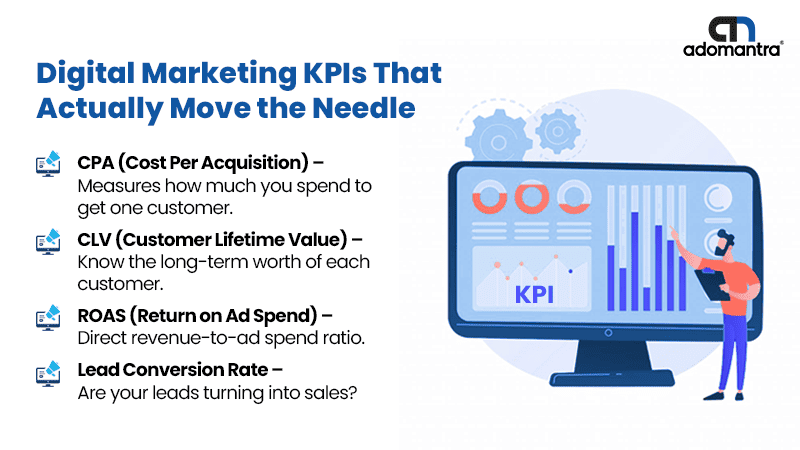
Digital Marketing KPIs vs Vanity Metrics: Know the Difference, Grow Smarter
Not all metrics are created equal. If you’re measuring success using surface-level stats, you might be making decisions based on the wrong signals.
Let’s break it down.
|
Vanity Metric |
Why It’s Misleading |
Real KPI Alternative |
|
Page Views |
Doesn’t reflect user intent or quality of traffic |
Time on Page, Bounce Rate |
|
Social Media Likes |
Can be bought or triggered by passive scrolling |
Click-Through Rate (CTR), Comments |
|
Impressions |
Shows visibility, not engagement or action |
Conversions per Impression |
|
Follower Count |
Doesn’t indicate lead or sales potential |
Engagement Rate, Conversion Rate |
|
Email Open Rate |
Doesn’t mean they read or acted on your message |
Click-to-Open Rate, Reply Rate |
B2B sales cycles are long and complex. Vanity metrics can create a false sense of success. At Adomantra, we dig deep into marketing KPIs vs vanity metrics so you focus only on what drives business.
Why KPIs Matters for B2B Brands
B2B sales cycles are long. Decisions are complex. Stakeholders are many. Vanity metrics can create a false sense of success. You might be celebrating engagement while your pipeline is drying up.
At Adomantra, we help businesses cut through that noise. We dig deep into marketing KPIs vs vanity metrics and help you focus on what leads to revenue—not ego boosts.
It’s not about looking good in reports. It’s about growing your business with real data.
Why Adomantra? Because We Don’t Just Market. We Measure.
We believe in real marketing KPIs that drive results. No vanity. Just measurable success.
Whether you’re in healthcare, education, retail, or real estate, we help you measure digital marketing success with the right mix of actionable marketing metrics and digital marketing ROI metrics.
If you’re ready to shift from reporting dashboards to real outcomes, let’s talk.
Let’s face it—REAL KPIs build REAL businesses.

